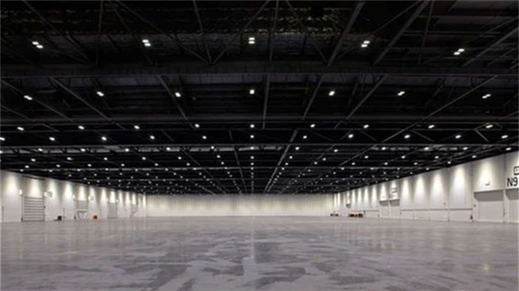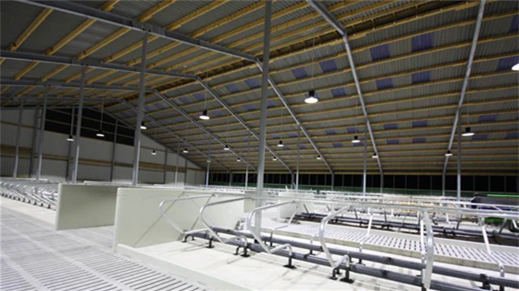In the realm of industrial lighting, high bay lights stand as stalwart guardians, illuminating vast spaces with unparalleled efficiency and brilliance. This comprehensive guide unveils the essence of high bay lights, delving into their functionalities, diverse applications, and the pivotal role they play across various industries.
Understanding High Bay Lights
High bay lights, characterized by their elevated mounting heights, are luminaires designed to illuminate spaces with high ceilings, typically ranging from 15 to 50 feet or more. They are specifically engineered to provide uniform and intense illumination over large areas while minimizing glare and shadows.
Warehouses and Distribution Centers
High bay lights serve as the backbone of illumination in warehouses and distribution centers, where vast storage areas demand consistent and uniform lighting. By strategically positioning high bay lights at elevated heights, these facilities achieve optimal light distribution, minimizing shadows and ensuring efficient navigation for workers and machinery alike. From loading docks to aisles, high bay lights provide essential visibility, enhancing inventory management and operational efficiency.
Manufacturing Facilities
In manufacturing environments, where precision and safety are paramount, high bay lights play a pivotal role in facilitating seamless production processes. From assembly lines to machining areas, these luminaires deliver intense and glare-free illumination, enabling workers to perform intricate tasks with precision and accuracy. Moreover, the durability and reliability of high bay lights withstand the rigors of industrial operations, ensuring uninterrupted productivity and minimal downtime.
Gymnasiums and Sports Facilities
High bay lights illuminate the arenas of athleticism, transforming gymnasiums and sports facilities into vibrant and dynamic spaces. Whether hosting basketball games or fitness classes, these luminaires provide consistent and flicker-free lighting, enhancing visibility and ensuring an immersive spectator experience. With adjustable features and customizable lighting controls, high bay lights cater to the diverse needs of sporting events, promoting safety and performance excellence.
Retail Stores and Supermarkets
In retail environments, where aesthetics and ambiance are essential, high bay lights elevate the shopping experience with their sleek and modern design. From fashion boutiques to grocery aisles, these luminaires accentuate merchandise displays and enhance visual appeal, guiding customers through immersive and well-lit spaces. Furthermore, the energy efficiency of high bay lights aligns with sustainability initiatives, reducing operational costs and environmental impact for retail establishments.

source:Pinterest
Benefits of High Bay Lights
- Efficiency: High bay lights leverage advanced lighting technologies such as LED (Light Emitting Diode) to deliver exceptional energy efficiency, significantly reducing electricity consumption and operational costs.
- Durability: Built to withstand harsh industrial environments, high bay lights boast robust construction and superior thermal management, ensuring long-term reliability and minimal maintenance requirements.
- Optimized Performance: Equipped with precision optics and adjustable features, high bay lights offer customizable lighting solutions tailored to specific application requirements, optimizing visual clarity and efficiency.
- Enhanced Safety: By providing consistent and glare-free illumination, high bay lights contribute to a safer work environment, reducing the risk of accidents and enhancing employee well-being.
- Environmental Sustainability: The eco-friendly design of high bay lights, coupled with their energy-efficient operation and extended lifespan, aligns with sustainability goals and promotes eco-conscious practices.
Determining the Number of High Bay Lights
The number of high bay lights required varies depending on factors such as the size and layout of the space, desired lighting levels, mounting height, and specific application requirements. As a general guideline, industrial lighting experts recommend the following approximate wattage per square foot for different environments
1. Space Layout and Size
Measure the dimensions of the space to be illuminated. For example, a warehouse might measure 100 feet by 150 feet with a ceiling height of 30 feet.
Calculate the total square footage of the area: 100 ft x 150 ft = 15,000 sq. ft.
2. Illuminance Requirements
Refer to industry standards for recommended illuminance levels. For warehouse lighting, the Illuminating Engineering Society (IES) suggests an average illuminance of 30-50 lux (2.8-4.6 foot candles).
Determine the desired illuminance level based on the specific tasks performed in the space. For detailed tasks, such as reading labels on packages, higher illuminance levels may be required.
3. Mounting Height
Measure the mounting height of the high bay lights. In our example, the mounting height is 30 feet.
Consider the inverse square law, which states that illuminance decreases by the square of the distance from the source. Higher mounting heights may require higher wattage luminaires to compensate for the increased distance.
4. Light Distribution
Choose high bay lights with the appropriate beam angle to ensure uniform illumination. For example, a 120-degree beam angle provides broader coverage, while a 60-degree beam angle offers more focused light distribution.
Calculate the spacing between high bay lights based on the beam angle and mounting height to achieve uniform light levels across the space.
5. Lighting Layout and Spacing
Create a lighting layout plan that specifies the placement and spacing of high bay lights. For example, if using fixtures with a 120-degree beam angle, spacing them every 20 feet may provide adequate coverage.
Adjust the layout to avoid areas of shadow or over-illumination, taking into account the positioning of obstacles such as shelving units or machinery.
6. Task Analysis
Identify critical work areas or zones where higher lighting levels are required. For example, in a manufacturing facility, inspection stations may require brighter illumination than storage areas.
Allocate additional high bay lights or adjust their positioning to prioritize illumination in these areas, ensuring optimal visibility for workers.
7. Energy Efficiency and Cost Considerations
Calculate the total wattage required based on the illuminance level and square footage of the space. For example, for a 15,000 sq. ft. warehouse aiming for 40 lux average illuminance, the total wattage needed might be calculated as follows:
Total Wattage = Illuminance Level (lux) x Area (sq. ft.) / Lumens per Watt (efficacy of the fixture)
Compare the energy consumption and operating costs of different lighting technologies, such as LED, HID, or fluorescent, to determine the most cost-effective solution.
8. Compliance and Safety Regulations
Ensure that the selected number and configuration of high bay lights comply with relevant safety standards and building codes. For example, OSHA (Occupational Safety and Health Administration) regulations may specify minimum lighting requirements for certain industrial environments.
Address any specific lighting requirements mandated by regulatory authorities or industry regulations, such as emergency lighting provisions or hazardous location classifications.
9. Flexibility and Future Expansion
Plan for future expansion or changes in the layout of the space by incorporating flexibility into the lighting design. Choose modular or scalable lighting solutions that allow for easy addition or relocation of high bay lights as needed.
Consider the potential for daylight harvesting or motion sensors to further optimize energy usage and adapt to changing occupancy patterns over time.
Conclusion
In conclusion, high bay lights represent the pinnacle of industrial lighting solutions, offering unparalleled efficiency, durability, and performance across a myriad of applications. Their ability to illuminate vast spaces with precision and uniformity not only enhances productivity and safety but also underscores their indispensable role in shaping the future of industrial illumination. Whether illuminating warehouses, factories, or retail spaces, high bay lights stand as beacons of innovation, ushering in a new era of brilliance and efficiency in the realm of industrial lighting.


































Leave a comment
This site is protected by hCaptcha and the hCaptcha Privacy Policy and Terms of Service apply.